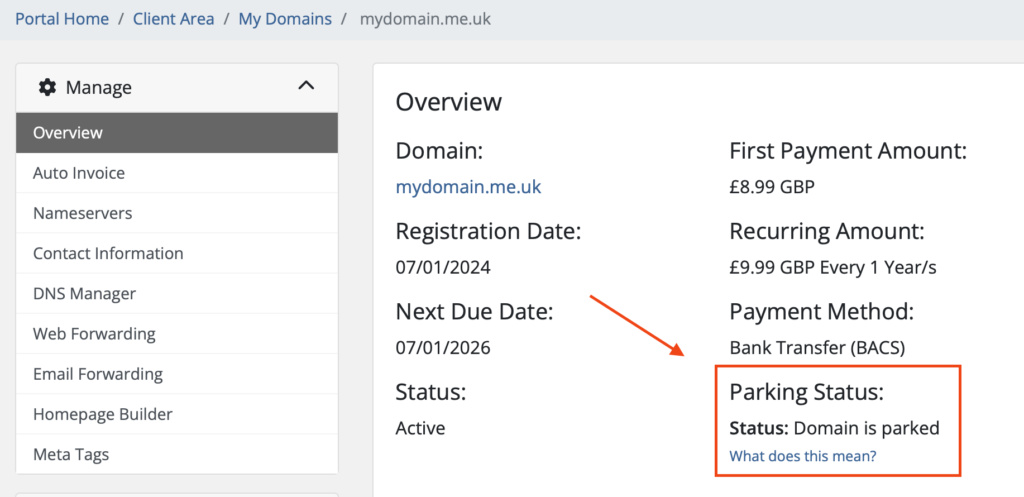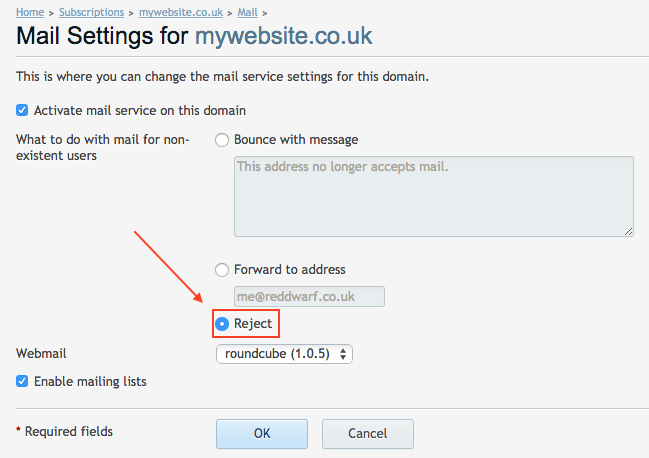How to Check your Domain Parking Status
When you register a new domain name with UK Cheapest, your domain name is parked by default unless you assigned specific name servers during the registration process.
While your domain name is parked, you will have access to the domain parking features such as Homepage Builder, Email Forwarding and Web Forwarding. The parking features are useful if you do not plan to immediately host a new website using your domain.
You can immediately inspect the parking status of your domain name in Client Area > My Domains > select your domain > Overview > Parking Status.
For your domain name to be parked, your domain name servers need to be set to:
- ns.microlite1.com (or ns.ukc.uk)
- ns2.microlite1.com (or ns2.ukc.uk)
These name servers connect your domain name to the domain parking server. If your domain name is not parked, the domain parking features will not be accessible when managing your domain name.
Check your name server settings
There are a couple of ways to check your current name server settings.
Method 1: Check the WHOIS record for your domain name
Go to the Nominet Lookup page and check the record for your domain name. Scroll down to the name server section and there you will see how you name servers are set.
Method 2: Check the name server settings in the Domain Management area
Login to the Client Area, go to Domains > My Domains, find your domain name in the list, select Manage Domain > Nameservers. You will see the active name servers for this domain.
So is your domain parked?
If your name servers are set like this, then your domain name is parked:
- ns.microlite1.com (or ns.ukc.uk)
- ns2.microlite1.com (or ns2.ukc.uk)
If you name servers are set to anything else, then your domain name is not parked and the parking features will not be active.
If your domain is not parked, and you want to park it
Simply change your name servers to the parking server to activate the parking features.
- ns.microlite1.com (or ns.ukc.uk)
- ns2.microlite1.com (or ns2.ukc.uk)
For simplicity select “use default name servers” then click the “Change Namservers” button.
This disconnects your domain name from the original server so ensure you no longer require any services performed on the original name servers.
Be mindful that name server changes can take up to 24 hours to take effect, so be prepared to wait a little while before the parking features begin to function.
 Prevent Automated Renewal Invoices for Domains No Longer Required
Prevent Automated Renewal Invoices for Domains No Longer Required




 Adding HTTPS to your website using a 2048 bit SSL certificate will cause Google to give your site a “ranking boost” against your non-SSL counterparts.
Adding HTTPS to your website using a 2048 bit SSL certificate will cause Google to give your site a “ranking boost” against your non-SSL counterparts.